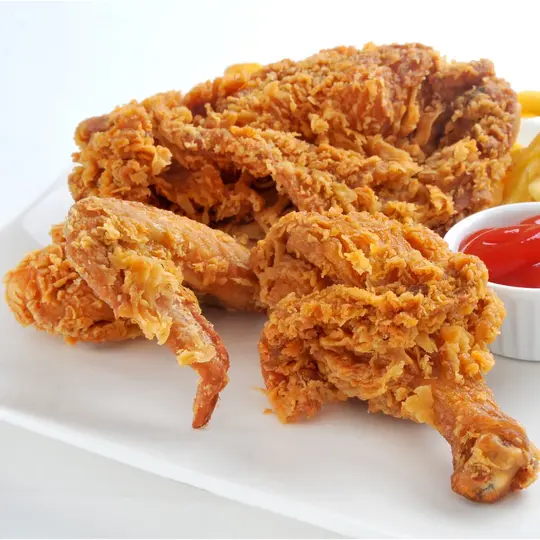Introduction to Broasted Chicken
Broasted chicken is not just a dish; it’s a culinary tradition that has tantalized taste buds for decades. Originating from the heart of Wisconsin, this cooking method combines pressure cooking and deep frying to create chicken that is juicy inside and perfectly crispy on the outside. The term broasted is actually a trademark, but it has become synonymous with this unique cooking technique that has spread far beyond its American roots.

Interestingly, the history of broasted chicken is as rich as its flavor. Invented in the 1950s, this technique was a revolutionary way to cook chicken quickly while retaining its moisture and flavor. Today, it remains a popular choice not only in homes but also in restaurants worldwide. For those interested in the culinary arts, exploring the History of Broasting provides a fascinating glimpse into how this cooking method became a global phenomenon.
The importance of broasted chicken in culinary tradition cannot be overstated. It represents a blend of innovation and tradition, a testament to the endless possibilities within the culinary world. For anyone passionate about cooking, understanding the nuances of broasting is a must. This technique is not just about cooking chicken; it’s about preserving its tenderness and enhancing its flavor, making every bite a memorable experience. For more insights into the nutritional aspects of chicken, consider exploring the Nutritional Information of Chicken to appreciate the health benefits of this versatile ingredient.
In summary, broasted chicken is more than just a meal; it’s a culinary masterpiece that stands the test of time. Whether you’re a seasoned chef or a home cook, mastering the art of broasting can elevate your cooking and introduce you to a world of flavors that is both rich in history and taste.
The Broasting Process Explained
The uniqueness of broasting lies in its ability to lock in the chicken’s natural juices while achieving an unparalleled crispy exterior. This method is a clever hybrid of pressure cooking and deep frying, a technique that requires specific equipment, namely a broaster. For those looking to replicate this method at home, understanding the equipment and process is crucial.
Firstly, the equipment needed for broasting at home includes a pressure fryer. This is not your average kitchen appliance, but it’s essential for achieving that authentic broasted texture and flavor. While traditional deep fryers work by submerging food in hot oil, a pressure fryer also seals the food under pressure, speeding up the cooking process and ensuring that the moisture is sealed within the meat. For a deeper dive into various cooking techniques, including broasting, the Cooking Techniques Overview on Wikipedia offers valuable information.
The step-by-step broasting process begins with marinating the chicken, typically in a mixture of spices and buttermilk, to tenderize and flavor the meat. After marinating, the chicken is coated in a seasoned flour mixture, which helps create the crispy exterior when cooked. The chicken is then placed in the pressure fryer, where it cooks under high pressure, ensuring that the inside remains juicy and tender while the outside becomes golden and crispy.
Understanding the broasting process is not just about following steps; it’s about mastering a cooking method that brings out the best in chicken. For those interested in exploring a wide range of chicken dishes, including broasted recipes, Pinterest offers a wealth of Inspiration for Chicken Dishes that can spark creativity in the kitchen.
In conclusion, the broasting process is a unique culinary technique that combines the best of frying and pressure cooking. By understanding the equipment needed and following the step-by-step process, home cooks can achieve restaurant-quality broasted chicken in their own kitchens. Whether you’re a novice cook or an experienced chef, mastering the art of broasting can add a delicious and versatile dish to your culinary repertoire.






